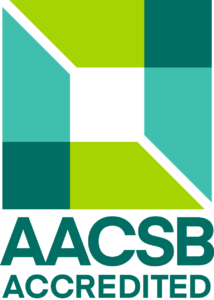Accounting
- Credits: 6
- Ending: Examination
- Range: 2P + 2C
- Semester: winter
- Year: 2
- Faculty of Business Management
Teachers
Included in study programs
Teaching results
By completing the course, students will gain the knowledge, competencies and skills necessary to understand the economic foundations of accounting, the basic principles of double-entry accounting, its regulatory framework and the preparation of financial statements and the interpretation of accounting information.
Knowledge
The student will gain knowledge about the basic categories of financial statements (assets, liabilities, equity, costs, revenues), their use in determining, presenting and assessing economic results and how transactions and other facts affect these categories. Based on this, they will also gain knowledge about accounting as an information system providing data necessary for future decision-making and for confirmation purposes. They will also learn about the need and existence of various regulatory frameworks for accounting relevant in the Slovak environment, about the double-entry accounting technique and about the principles, procedures and formal rules that are applied in accounting and about the content and structure of financial statements.
Competencies
After completing the course, the student will be able to identify the relationship between transactions or other events and basic accounting categories and apply the basic principles and formal requirements for maintaining accounting records and preparing the basis for the preparation of financial statements.
Skills
Students will be able to apply the rules of double-entry accounting to economic transactions and other events in accordance with the relevant regulatory frameworks for accounting. On the other hand, based on accounting information, they will be able to deduce the economic position of the accounting entity and its changes as a result of these events.
Indicative content
Accounting as a source of economic information with confirmatory and predictive value; Valuation of assets and liabilities and its general impact on accounting information; Regulatory framework of accounting; Legal regulation of accounting in the Slovak Republic; Content and structure of financial statements; General requirements for accounting information; Economic activity of the enterprise and its framework representation in accounting; The principle of double-entry accounting and its use; Formal and technical aspects of accounting; Comparing the financial statements of micro-accounting units, small accounting units and large accounting units.
Support literature
Recquired:
1. Juhászová, Z. a kol. 2021. Účtovníctvo. Bratislava : Wolters Kluwer SR
2. Užík, J. - Sigetová, K. - Užíková, L. (2023). Účtovníctvo zbierka príkladov. Bratislava : SKCÚ
3. Pakšiová, R. – Janhuba, M. (2012). Teória účtovníctva v kontexte svetového vývoja. Bratislava : Wolters Kluwer.
Optional (laws and other statutes for the accounting in the SR):
1. Zákon č. 431/2002 Z. z. o účtovníctve v znení neskorších predpisov.
2. Opatrenie Ministerstva financií č. 23054/2002 –92 ktorým sa ustanovujú podrobnosti o postupoch účtovania a rámcovej účtovej osnove pre podnikateľov účtujúcich v sústave podvojného účtovníctva v znení neskorších predpisov.
3. Opatrenie Ministerstva financií Slovenskej republiky z 3. decembra 2014 č. MF/23377/2014-74, ktorým sa ustanovujú podrobnosti o individuálnej účtovnej závierke a rozsahu údajov určených z individuálnej účtovnej závierky na zverejnenie pre veľké účtovné jednotky a subjekty verejného záujmu v znení neskorších predpisov
Syllabus
1. Accounting as a source of economic information with confirmatory and predictive value Basic categories used in accounting (assets, liabilities, equity, costs, revenues) their economic definition and use in making decisions about the future and assessing the past. Users of accounting information and their typical requirements for its content and quality. Assessment of the wealth of the enterprise and its changes as a result of real transactions and other facts. Comparability of accounting information and its impact on the creation of accounting regulations. 2. Valuation of assets and liabilities and its general impact on accounting information The importance of valuation in assessing achieved results and making decisions for the future. Linking basic accounting categories to cash flows. Valuation based on input and output prices. Use of market prices, models taking into account discounted cash flows from continuing use and models taking into account planned depreciation. Allocation of valuation in the case of common input or output prices. Procedure in the case of non-monetary and deferred payments. 3. Accounting regulatory framework International (IFRS) and national (SR, CR, US GAAP) accounting regulations - their impact on the comparability of accounting information and on the costs of providing accounting information. The scope of accounting information required by users and its impact on the typical organization of the accounting system. The cycle of accounting information creation: accounting cases including transactions and other facts, accounting entries, accounting books and financial statements. The need for aggregation and confidentiality of records as the reason for the creation of financial statements. Framework content of financial statements. 4. Legal regulation of accounting in the SR Framework role of the Accounting Act and measures of the Ministry of Finance of the SR and the areas they address. The relationship of accounting to other laws (Bankruptcy and Restructuring Act, Commercial Code, Income Tax Act, Criminal Code). Accounting unit and responsibilities of persons entrusted with its administration and management in the field of accounting. Accounting units focused on achieving profit and other accounting units. The importance of verifying financial statements. 5. Content and structure of financial statements Breakdown of financial statements from various aspects (time, regularity, size criteria, by industry, number of accounting units included in the statement). General structure of financial statements and its components. The need to distinguish between equity and liabilities and distinguish between non-current and current liabilities and non-current and current assets. Open sources of data on financial statements in the Slovak Republic and the USA. 6. The principle of double-entry accounting and its use The general ledger as a part of accounting books, account and double entry of accounting entries. Use of double-entry accounting and the balance equation as control elements of accounting. Basic principles of opening accounts, examples of current accounting and basic principles of closing accounts. 7. Formal and technical aspects of accounting I Accounting documentation, its content, requirements and requirements for its maintenance and archiving. Examples of business documentation (quotes, orders, cash documents, invoices, current account statement, inventory and warehouse cards) and their relationship to economic activity and the operating cycle of the enterprise. Digitalization and automation of accounting. 8. Formal and technical aspects of accounting II Confirmation of receivables and payables. Correction of errors. Inventory, its content, requirements for its implementation and its use as an accounting control tool. Trial balance, its content, use as a tool for checking duplication and illustrative compilation based on selected data. 9. General requirements for accounting information Definition of the principles of fair presentation of the financial position and performance of the accounting entity, relevance, comparability, understandability, timeliness, materiality, priority of content over form, continued operation of the accounting entity, accruals, prudence, consistency and verifiability. Illustration of the impact of their use and absence of application on the decision-making of stakeholders 10. Economic activity of the enterprise and its framework representation in accounting I Economic activity of the enterprise, operating cycle of the enterprise and their relationship to accounting. Basic indicators evaluating the activity of the enterprise. Transactions and facts (including changes in valuation) affecting and not affecting the result of the economy. Transactions and facts (including changes in valuation) affecting and not affecting the indebtedness and the immediate ability of the enterprise to settle its obligations. 11. Economic activity of the enterprise and its general representation in accounting II A general description of the following typical transactions and facts and their impact on the total (or individual) items of the balance sheet and profit and loss statement: purchase, consumption, sale, settlement relations with suppliers, customers and employees. 12. Economic activity of the enterprise and its general representation in accounting III A general description of the following typical transactions and facts and their impact on the total (or individual) items of the balance sheet and the profit and loss account: depreciation, extraordinary reduction in value, revaluation, establishment of a business, financing through loans and borrowings, relationship to the state. 13. Comparison of financial statements of micro-accounting units, small accounting units and large accounting units.
Requirements to complete the course
During the semester, a maximum of 40 points can be obtained for active learning and 60 points for taking the exam. The student is required to obtain at least 51% of the points in each of the above parts.
Student workload
26 hours of lectures
26 hours of exercises
13 hours of preparation for lectures
26 hours of preparation for exercises
26 hours of preparation for written work
39 hours of preparation for the final written exam
Workload of a full-time student (in hours): 156
Language whose command is required to complete the course
slovak
Date of approval: 04.03.2025
Date of the latest change: 20.08.2025

